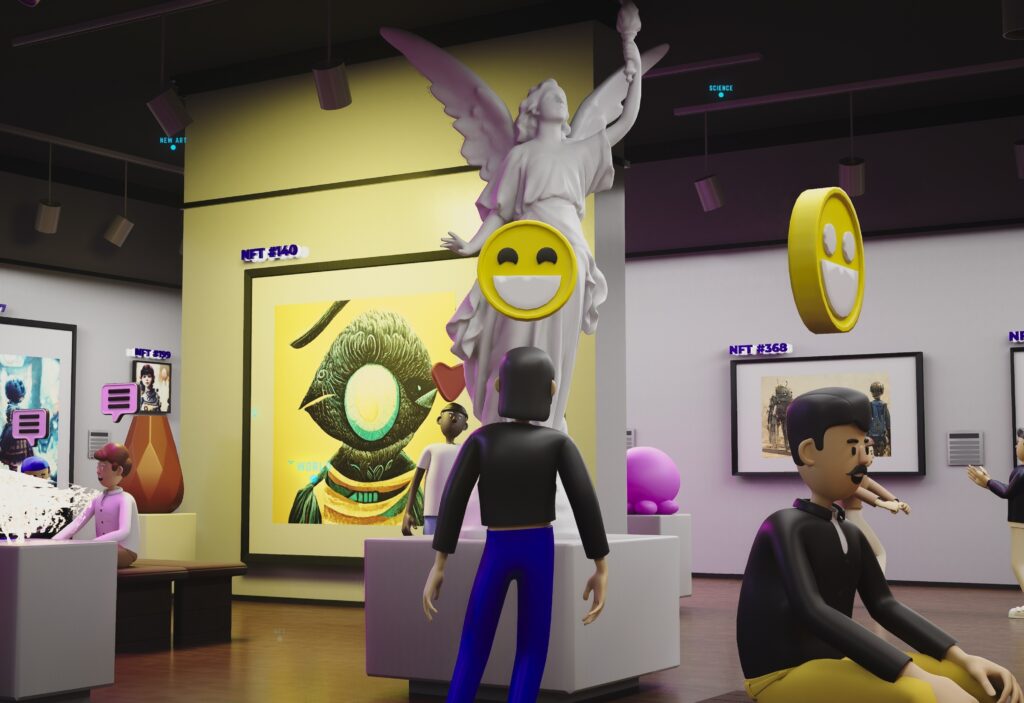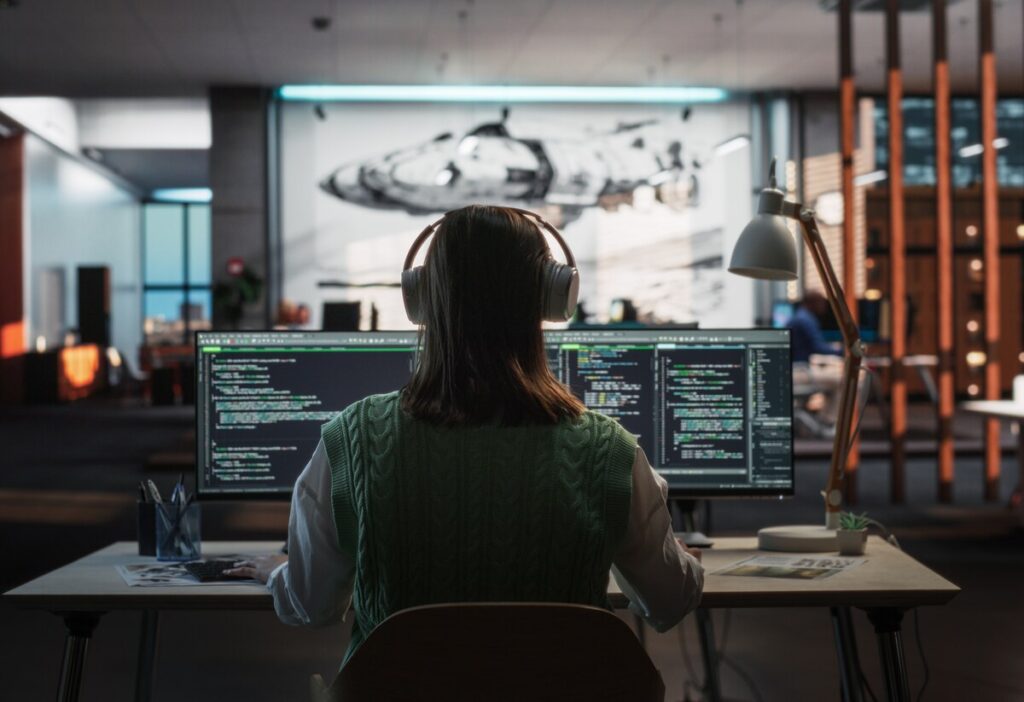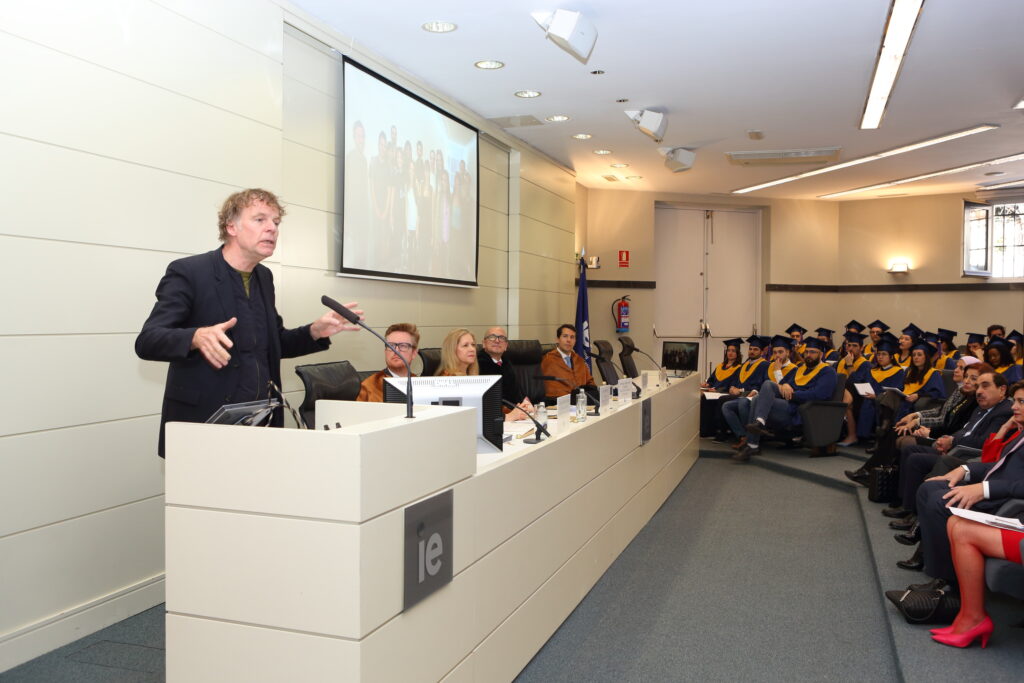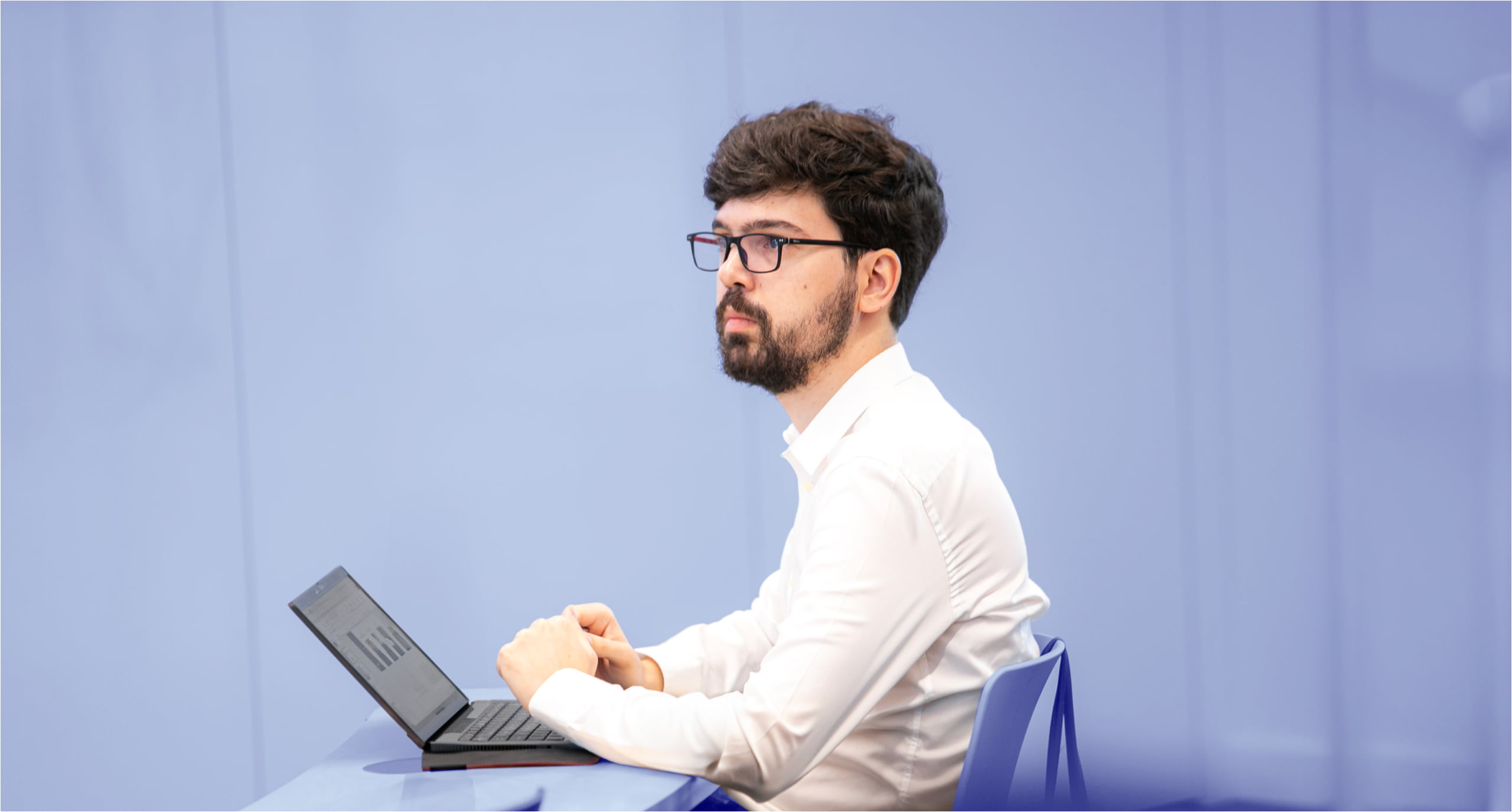04/02/2025
Join us as we delve into virtual design with Maya Kaaki, XR specialist and collaborator with IE School of Architecture & Design.
We live in a time where technology and creativity intersect, forming emergences of digital design and virtual worlds. From retail spaces to educational experiences, virtual environments are redefining how we see and interact with the world around us. At the heart of creating an impactful virtual experience lies design thinking: A user-centered approach that integrates empathy. This helps us understand the solutions this technology offers, all while we master its development and production in the most efficient way. This is the essence of virtual design.
But what does it really take to craft virtual environments or video games? Ones that not only captivate users and brands, but address the real-world needs?
Understanding your audience in virtual design
First and foremost, we need to understand who our audience is. The users. It all goes back to understanding their needs, emotions and behaviors. How? Through case studies, interviews, surveys and research. For example, before crafting a 3D virtual classroom, we need to gather sufficient insights into the learning preferences, challenges and expectations of both the
students and teachers. In parallel to books and theories, we nowadays have the option to immerse ourselves in the notions we’re learning. For instance, biology students can enter the human body, visualize organs and systems in three dimensions and be fully captivated by these virtual worlds we are creating.
After gathering data during the research phase, our next step is to clearly define the problem. This involves identifying the key challenge the virtual environment aims to address. For example, imagine a museum creating an interactive virtual exhibit where visitors can explore ancient ruins in their original glory. All of this, but you’re fully immersed in historical narratives as if you were there, witnessing 2D unfold to 3D.
Such innovations not only attract audiences but also provide clients with a compelling way to showcase their value propositions.

After identifying the problem, we craft the creative concepts. Think of it as a brainstorming playground. This art direction and production works to generate ideas from interactive storytelling to gamified elements. Tools like mind maps and sketching apps aid in concept visualization, while digital design platforms such as Photoshop and Illustrator bring these concepts to life. Additionally, AI-powered tools like Midjourney and DALL·E enable rapid concept visualization, providing unique and diverse perspectives for creative brainstorming. These tools, along with other AI platforms like ChatGPT for idea generation and Runway for video editing, expand the possibilities for ideation and design.
Prototyping with 3D models for virtual design
Next, designers start prototyping with 3D models and assets. This is essential for testing ideas quickly. It involves creating wireframes, 3D mockups, or low-fidelity VR environments using tools like Blender or Unity. Prototyping allows teams to identify potential issues early.
After getting the final feedback from clients, end users and stakeholders, technical artists and creative coders start to refine the experience.

Additionally, more specialists join forces to refine the experience. This includes audio designers to craft immersive soundscapes, graphic interface designers to enhance usability, animators to bring elements to life, and other creatives who help craft the final virtual environment into a cohesive and engaging experience.
Essential tools for virtual environment design
1. 3D modeling and texturing software
Tools like Blender, Maya, Cinema 4d and Houdini, among others, are vital for creating the foundational structures of virtual environments. Texturing tools like Substance Painter and Adobe Substance 3D Designer are essential for adding realistic or stylized textures and details to models. This levels up the overall look and feel of the experience.
2. Game engines
Unity and Unreal Engine empower designers and developers to bring their creations to life, providing interactive and immersive experiences.
3. Collaboration platforms
Platforms like Figma, Miro, and Notion facilitate collaboration and idea sharing among multidisciplinary teams, enabling seamless project management and design iteration.
Designers working on virtual environments need a unique blend of skills to thrive in this innovative field. User-centered design expertise is critical to ensure environments meet user needs and behaviours, making them intuitive and impactful. Technical proficiency in 3D modelling, coding and game engine tools like Unity or Unreal is essential for building and animating immersive spaces. Storytelling also plays a significant role. This is because engaging narratives captivate users and guide their experiences. Designers must be adaptable and stay ahead of rapidly evolving trends, tools and best practices.
Collaboration and communication are equally vital, as projects often involve diverse teams of specialists, requiring seamless alignment between technical and creative aspects.

By mastering essential tools and continuously advancing their expertise, designers can push the boundaries of innovation. This is relevant in industries ranging from healthcare to retail and beyond. With virtual environments rapidly rising as a transformative force, the industry is bursting with potential for those eager to shape its future. Now is the time to embrace the challenge. That means embracing cutting-edge technology in this dynamic field and becoming part of an exciting movement that is redefining how we connect with the world and each other.
Join us at IE School of Architecture & Design
At IE School of Architecture and Design, you’re not just studying—you’re shaping the future. Our “Design Ahead” ethos submerges you in bold, innovative projects that anticipate modern needs. This is your chance to become a leader in the creative industries—in a world that needs your vision.
You’ll get hands-on learning with cutting-edge tech, collaborate with brilliant minds to push your creativity to new heights.

The Master in Design (MDes) in Videogame Design and Virtual Environments at IE School of Architecture & Design is a dynamic 10-month program in Madrid for those passionate about gaming, technology, and interactive media. You’ll gain skills in game mechanics, storytelling, UX/UI, art, sound design and technologies like XR and AI. And you’ll do so while exploring core concepts in sustainability and entrepreneurship.
Prepared to transform the world of gaming and virtual environments? Follow the link below and see what’s waiting for you.
Benjamin is the editor of Uncover IE. His writing is featured in the LAMDA Verse and Prose Anthology Vol. 19, The Primer and Moonflake Press. Benjamin provided translation for “FalseStuff: La Muerte de las Musas”, winner of Best Theatre Show at the Max Awards 2024.
Benjamin was shortlisted for the Bristol Old Vic Open Sessions 2016 and the Alpine Fellowship Writing Prize 2023.








